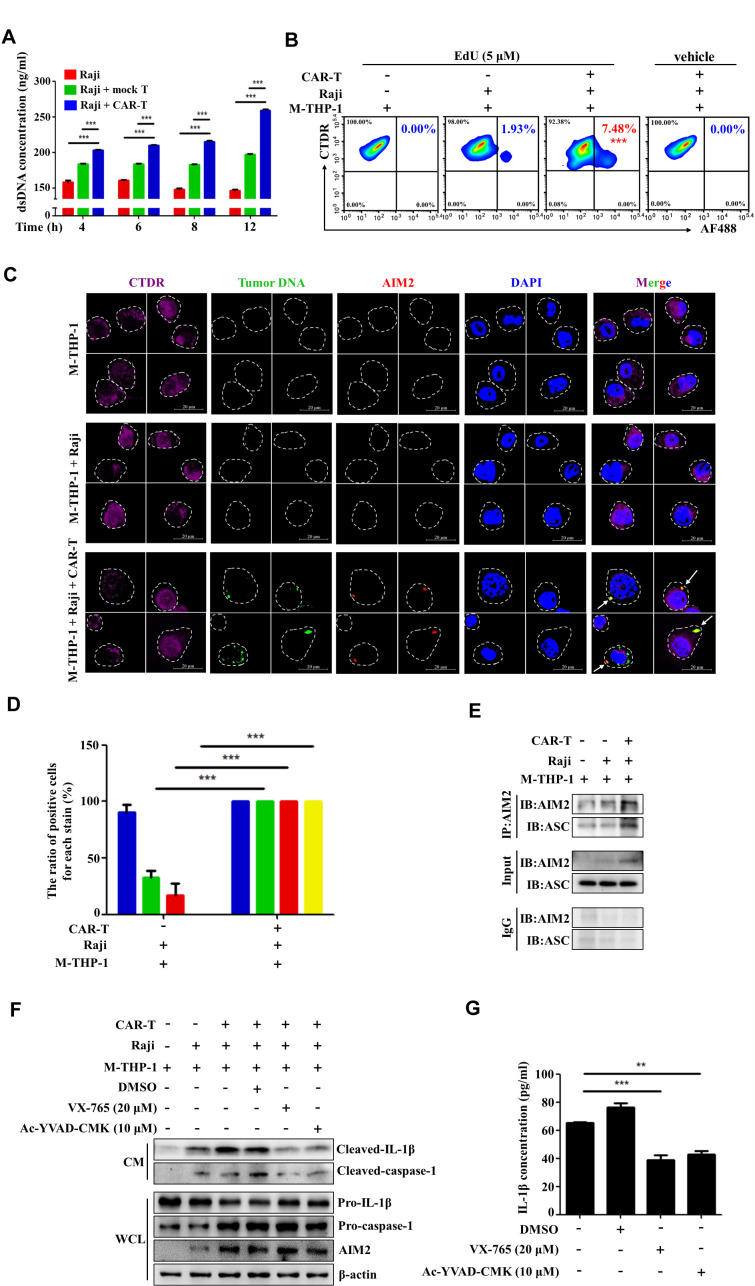Figure 2.
Activation of the AIM2 inflammasome pathway is triggered by CAR-T-induced tumor cell DNA release. (A) The level of double-stranded DNA (dsDNA) in the supernatant of Raji cells cocultured with CD19 CAR-T cells or mock T cells was evaluated by using the dsDNA assay kit (***p<0.001). (B) The cellular DNAs were prelabeled by 5-ethynyl-2’-deoxyuridine (EdU) in live Raji cells and the macrophages labeled with CellTracker deep red (CTDR) before the coculture. The proportion of CTDR+/EdU+ cells, which represent the macrophages phagocytozing the tumor cell DNAs, was analyzed by flow cytometry (***p<0.001). (C, D) The co-localization of the tumor cell DNAs with the cytosolic DNA sensor AIM2 in the microphages was examined by confocal microscopy and quantified (D, ***p<0.001). (E) The binding of AIM2 to ASC in the macrophages derived from THP-1 cells (M-THP-1) cocultured with CAR-T and Raji cells was evaluated by co-immunoprecipitation. (F) The expression of mature IL-1β and cleaved caspase-1 in the coculture supernatants and pro-caspase-1, pro-IL-1β, and AIM2 in the M-THP-1 cocultured with CAR-T/Raji cells in the presence of the caspase-1-specific inhibitors VX765 or ac-YVAD-cmk was evaluated by western blot. (G) The concentration of IL-1β in supernatants of the coculture of CAR-T/Raji/M-THP-1 in the presence of VX765 or ac-YVAD-cmk was examined by ELISA assay (**p<0.01, ***p<0.001). Data are presented as mean±SEM and analyzed by by two-way analysis of variance (ANOVA) followed by Bonferroni’s post hoc test or by one-way ANOVA followed by Dunnett’s test. CAR-T, chimericantigen receptor T; CM, culture medium; WCL, whole cell lysate.

